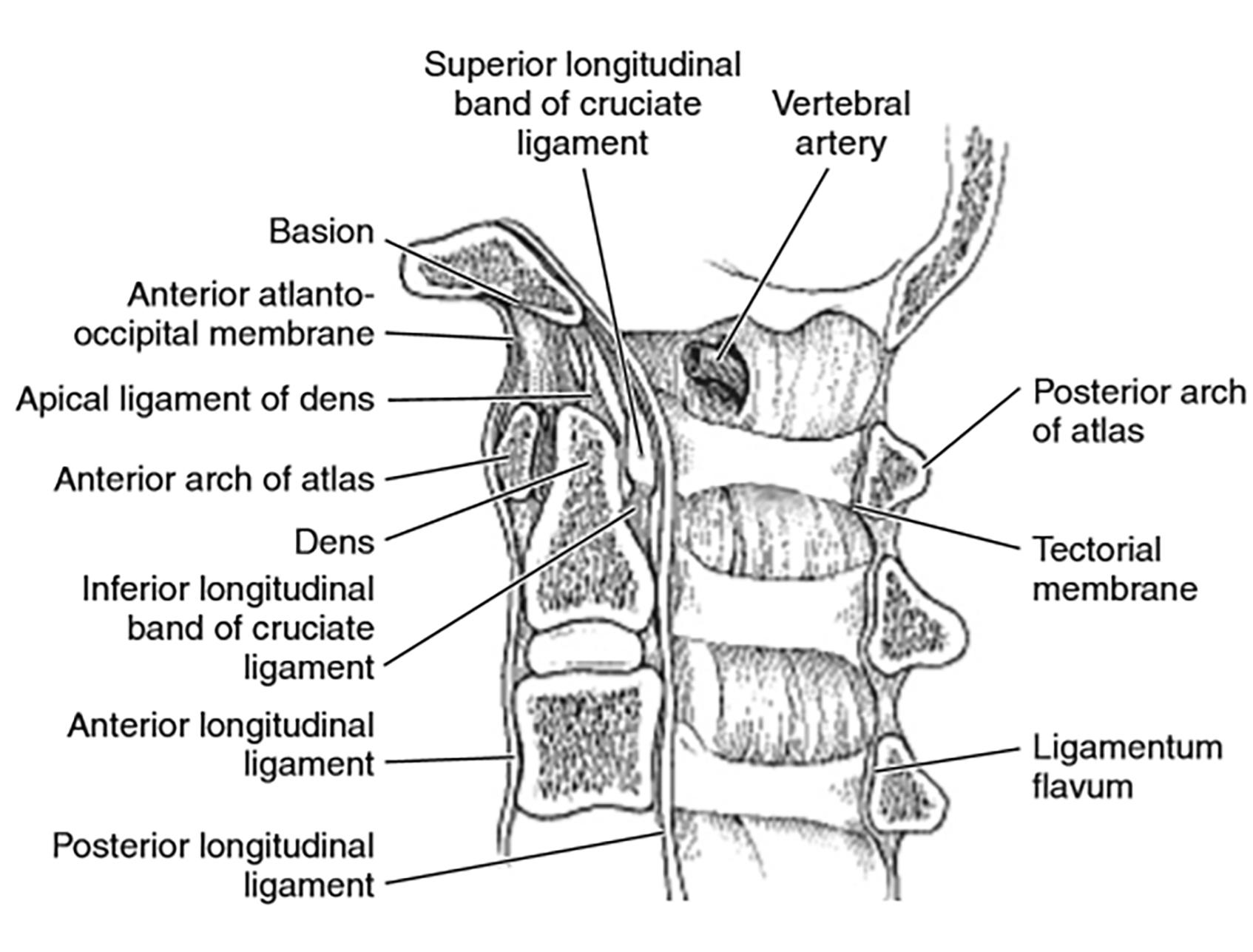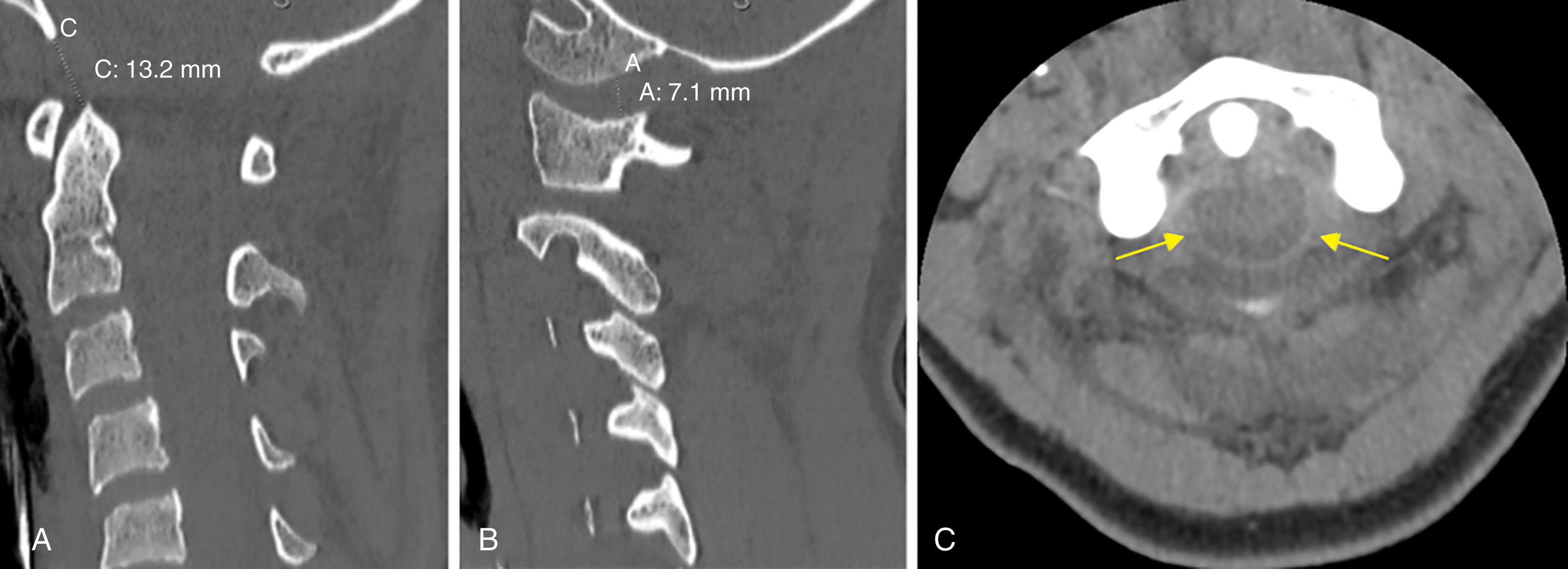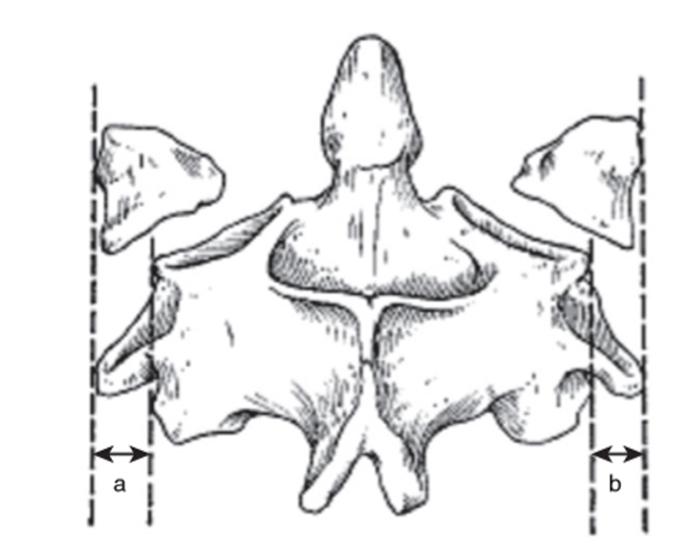Physical Address
304 North Cardinal St.
Dorchester Center, MA 02124
Approximately 3% to 4% of patients with blunt trauma in the emergency department sustain a spinal column injury, such as spinal fracture or dislocation, while 1% sustains a spinal cord injury. The incidence is higher in unconscious patients and those with associated head trauma. The most common cause of spinal column injuries is motor vehicle accidents (45%), followed by falls (20%), sports-related accidents (15%), violence (15%), and miscellaneous causes (5%). In conjunction with history and physical examination, imaging has a major role in the evaluation of the traumatic spinal injury to confirm the location, assess for spinal column stability, and evaluate for neural/spinal cord injury.
Up to 25% of spinal cord injuries may result from improper immobilization during transportation. All patients with a mechanism capable of producing spinal cord injuries should have proper immobilization of the entire spinal column during extraction, transport, and initial evaluation. This includes inline cervical immobilization, usually achieved with a cervical collar or tape and a rigid backboard. As with other instances of suspected injury to the central nervous system (CNS), initial resuscitation efforts should attempt to avoid systemic hypotension and adhere strictly to Advanced Trauma Life Support (ATLS) protocols.
Cervical spine injuries range from stable (minor soft tissue injuries) to unstable (complex injuries with a neural or vascular compromise). Failure to identify the latter can lead to devastating outcomes. Imaging the entire spine is necessary when an injury of the cervical spine is identified, as fractures identified at one level are often associated with injuries at other noncontiguous levels.
The National Emergency X-ray Utilization Study (NEXUS) and the Canadian C-Spine Rule (CCR) criteria provide well-established clinical decision criteria to exclude a clinically significant injury to the cervical spine in the awake stable adult trauma patient. Using either criterion is recommended to guide imaging decisions to rule out cervical spine injury in patients with blunt trauma. However, the NEXUS and CCR criteria are not applicable for the pediatric patient or patients 55 years and older, indicating a need for more liberal imaging decisions.
In unstable patients or those who do not meet either NEXUS or CCR criteria, computed tomography (CT) is the preferred imaging modality for the detection of cervical spine osseous injuries, outperforming plain radiographs. CT is highly sensitive (98.5%) to rule out a clinically significant injury to the cervical spine in patients without neurologic symptoms. CT imaging of the cervical spine is performed from the skull base level through the cervicothoracic junction with the cervical collar in place. Thin-section multiplanar reformations is performed to help identify the location and displacement of the fractures and any potential spinal canal, foraminal, or vascular compromise. Intravenous contrast is not required for the evaluation of cervical spine osseous injuries, although it is crucial for the detection of associated vascular injury in suspected cases.
Magnetic resonance imaging (MRI) is superior to CT for the assessment of extraosseous soft tissue injuries such as disk damage or herniation, ligamentous injuries, spinal cord contusion, and extra medullary hemorrhage. MRI is complementary to CT in patients with imaging or clinical concern for cord compression secondary to a disk protrusion, hematoma, or fracture fragments and is often used to guide surgical management and interventions. Also, MRI may be used to identify potential injuries to the ligaments, muscles, or intervertebral disks in patients with neck pain or tenderness out of proportion to the CT findings.
The cervical spine consists of seven vertebrae and is subdivided into the atlas, axis, and subaxial spine. The atlas (C1) is ring-shaped, consisting of anterior and posterior arches and two articular lateral masses, without a vertebral body or spinous process. The axis (C2) contains the odontoid process, which articulates with the anterior arch of the axis. The transverse ligament stabilizes this joint. The subaxial spine (C3–C7) consists of vertebral bodies with concave superior end plates. The facet joints are encapsulated synovial joints with overlying hyaline cartilage, and the facet joint angle is 45 degrees in the sagittal plane. Spinal stability primarily stems from ligament and disk integrity. Craniocervical stability involves intact anterior and posterior atlantooccipital membranes and articular capsules. The atlantoaxial joint is stabilized by the transverse ligament primarily with the paired alar, and apical ligaments provide secondary stabilization. The posterior ligamentum nuchae, interspinous ligaments, and ligamentum flavum act as a “tension band” to provide resistance against flexion-distraction injuries. The atlantoaxial joint provides 50% of the overall cervical rotation.

Vertebral arteries are paired arteries arising from the respective subclavian artery and ascend in the neck through the transverse foramina of C6 to C2 and then turn posteromedially around the superior articular process before entering the foramen magnum and combine to form the basilar artery. Occasionally, the vertebral artery may arise from the brachiocephalic artery (on the right), or the aortic arch (on the left) where it is common for the artery to enter the transverse foramen at a higher level than normal (C5 instead of C6). Nerve roots exit the canal through the intervertebral foramen. The posterolateral uncovertebral joint and intervertebral disk form the anterior border of the foramen while the posterior border is formed by the caudal superior articular facet. The C2 nerve root exits posterior to the C1–C2 facet joint, whereas the remaining cervical nerve roots exit anterior to the facet joints. The spinal nerves pass posterior to the vertebral artery at the middle of the corresponding lateral mass. The cervical plexus consists of the ventral rami of C1 through C4, whereas the brachial plexus is made up of the ventral rami of C5 through T1.
Occipital condyle fractures occur secondary to multiple mechanisms of trauma and should be considered a marker for potentially lethal trauma, as patients experience an 11% mortality rate from associated injuries. Anderson and Montesano classified these fractures into the following types:
Type I: Comminuted impacted fracture due to an axial loading (3%)
Type II: Extension of a skull-base fracture into the condyle (22%)
Type III: Avulsion fractures (75%)


Type I and II fractures are caused by axial loading and have intact ligaments/membranes. Type III fractures are caused by skull distraction and have disruption of the alar ligament and tectorial membrane.
Atlanto-occipital dissociation includes dislocation, distraction, and subluxation. Although atlanto-occipital dislocation is often lethal and associated with striking imaging findings, distraction and subluxation may be survivable, and imaging signs can be subtle and easily overlooked. It may occur from disruption of the ligaments between the occiput and C1 and commonly results in severe stretch or laceration leading to a high mortality rate. Patients who survive this injury demonstrate a wide variety of neurologic sequelae ranging from cranial nerve palsies affecting VI, X, and XII, to spinal cord injury.

On MDCT, atlanto-occipital dissociation can be evaluated by measuring the basion-dens interval (normal is less than 9.5 mm) or the atlanto-occipital interval (normal is less than 1.4 mm). In atlanto-occipital dissociation, both are increased and with the basion-dens interval, there may be associated avulsion fractures of the basion, tip of the dens, or the occipital condyle. MRI may reveal prevertebral edema, ligamentous disruption, spinal cord injury, or extra medullary hematoma. CT/MRI or conventional angiography should be performed to evaluate for vascular dissection or occlusion.
Treatment requires instrumented occipitocervical fusion to at least C2, frequently augmented with halo vest placement.
C1 vertebra is a bony ring that articulates with the occipital condyles and supports the cranium. The transverse ligament holds the odontoid in place immediately behind the anterior arch of C1; its integrity is the key determinant of atlanto-axial stability.


Atlas fractures result from the axial compressive force applied to skull vertex (axial loading). No uniformly accepted classification system of atlas fractures is available. Landells classified atlas fractures into:
Type I: Fracture of posterior or anterior arch alone
Type II: Fracture of posterior and anterior arches (aka “Jefferson burst fracture”)
Type III: Fracture of lateral mass
CT is the study of choice to delineate fracture pattern and identify associated injuries in the cervical spine. On anteroposterior radiographs, combined lateral displacement of fracture fragments on either side of the dens 7 mm is diagnostic of transverse ligament injury and instability “rule of Spence” ( Fig. 7 ). On CT, avulsion of the C1 tubercle, the insertion site of the transverse ligament, is another sign of instability. MRI is highly sensitive for the diagnosis of transverse ligament rupture, which determines fracture stability and can be identified on high-resolution T2-weighted imaging.

Nonoperative management is the standard of care for stable atlas fractures (intact transverse ligament), with 8 to –12 weeks of immobilization. On the other hand, posterior C1–C2 fusion versus occipitocervical fusion is indicated for unstable fractures.
Become a Clinical Tree membership for Full access and enjoy Unlimited articles
If you are a member. Log in here